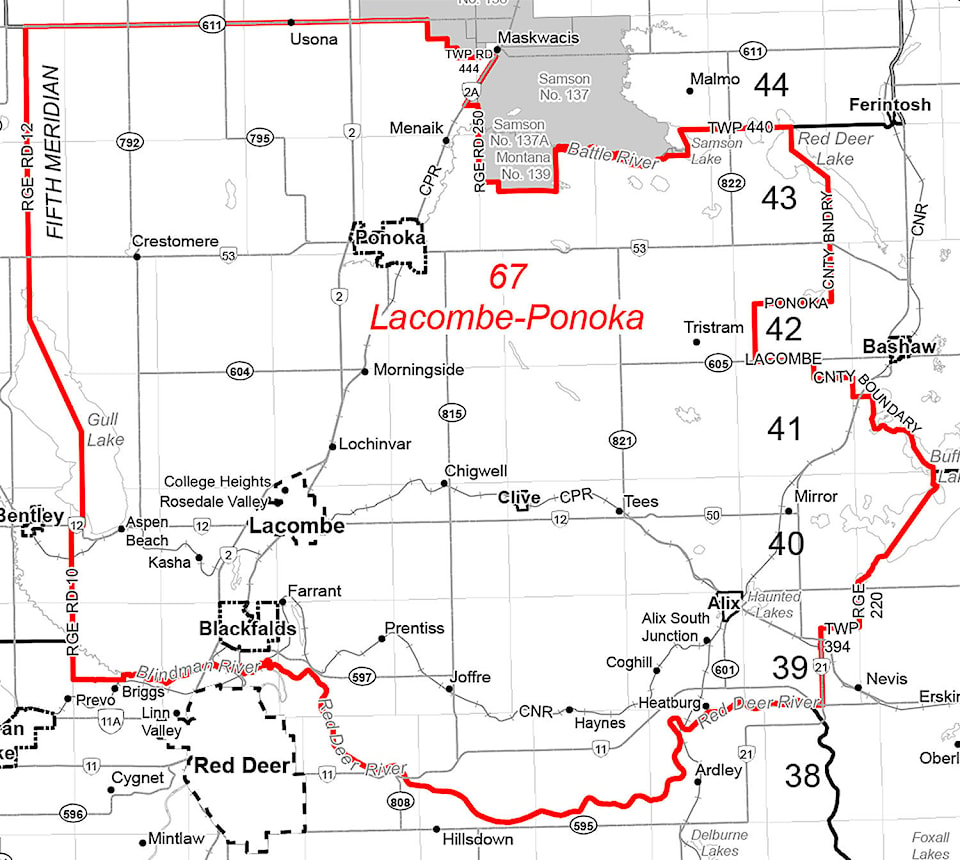A rather small change is not making as many waves for Lacombe-Ponoka MLA Ron Orr as a few other proposals are.
Recommendations suggested in the Alberta Electoral Boundaries Commission final report released Oct. 19 shows Orr with a similar boundary.
While the report tweaks Orr’s riding — shrinking it slightly be moving the Maskwacis town site into the same riding as the rest of the First Nations area — that isn’t what has him scratching his head.
“My riding was left relatively intact, just a few minor adjustments and on the positive side they recommend putting all of Maskwacis into one riding now,” Orr said.
What bothers him is the commission’s recommendation to consolidate rural ridings in several regions that may well reduce voter representation for those areas.
“The commission seems to have overly emphasized the factor of populations while disregarding several other required factors,” he stated.
Orr refers to the recommendations made that would see both Edmonton and Calgary receive a new riding each and a new riding of Airdrie-Cochrane created, while rural regions in the province’s northeast, east central and southeast would see them redistributed to eliminate three ridings. This is so the commission could meet its mandate of holding the number of ridings at the current level of 87.
Among the factors Orr believes the commission either overlooked or gave too much weight include maintaining common community interests and organizations within borders, existing municipal boundaries, geographical features such as road systems and the number of municipalities or jurisdictions in a riding.
“It appears that the less populated rural areas were cobbled together into very large territories that do not really consider those factors,” Orr said.
However, that being said, the rural area ridings that are being consolidated are presently all held by opposition United Conservative Party members and many urban ridings are the stomping grounds of NDP MLAs, which may well play into the argument against the recommendations.
The commission, for its part, referred to a 1991 Supreme Court of Canada decision called the Saskatchewan Reference, which explains issues of voter parity.
“The problems of representing vast, sparsely populated territories, for example, may dictate somewhat lower voter populations in these districts. To insist on voter parity, might deprive citizens with distinct interests of an effective voice in the legislative process as well as of effective assistance from their representatives in their ‘ombudsman’ role,” stated Justice Beverley McLachlin in the case. She is now Canada’s Chief Justice.
With the Alberta legislature back in session Oct. 30, MLAs will have the opportunity to debate and vote on the proposed changes before the session ends on Dec. 7.

